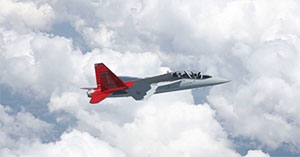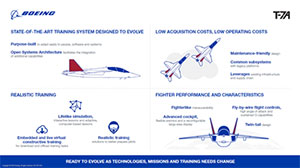| Span | 30.60 ft |
| Centerline Length | 46.0 ft |
| Overall Length | 47.73 ft |
| Max Cross Section (With Acap) | 37.7 ft2 |
| Engine (As Drawn) | F404 Afterburning |
| Fuel: Fuselage | 4,500 lbs |
| Expected Aircraft Performance / Envelope tested (as of Oct. 2023) Max Mach Max Alt Max AoA Max G |
0.975M 45 K ft. 30° 8 G |
T-7 Red Hawk: Breaking the norm
The T-7A Red Hawk is an all-new Advanced Pilot Training System (APTS) for the U.S. Air Force, with flexibility to evolve as technologies, missions and training needs change.
Digitally designed, built and tested, the T-7A is a low-risk, leading-edge, live, virtual and constructive fifth-generation aircrew training system that delivers a multi-generational leap in capability to revolutionize and reinvigorate fighter pilot training.
A Multi-generational Leap in Pilot Training
The T-7A Red Hawk is the only digital, next-generation trainer on the market that possesses military certification and meets modern training, low-cost needs. Its digital design enables the cost-effective integration of advanced training capabilities that will drastically improve pilot training for the next generation of fighter and bomber pilots.
The T-7A enhances warfighter training through:
- Improved pilot readiness: The all-new advanced pilot training system uses high resolution ground-based training systems and simulators to deliver robust and realistic integrated live, virtual and constructive training capabilities.
- Safety: Model-based engineering enabled testing throughout the aircraft’s design and build help ensure safety before the first flight. The T-7A’s cockpit egress system is the safest of any trainer.
- Flexibility for any mission: With an Open Mission Systems architecture and digital fly-by-wire controls, the T-7A supports training for a wide variety of fighter and bomber pilots and can evolve as technologies, threats and training needs change.
“The T-38 is a true workhorse training Air Force fighter and bomber pilots for Air Education and Training Command, but the T-7A Red Hawk is a game changer, providing advanced mission systems, a glass touchscreen cockpit, stadium seating, and embedded training capability.”
– Col. Kirt Cassell, U.S. Air Force T-7A program manager
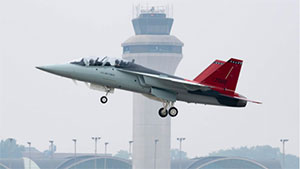
T-7A Red Hawk Technical Specifications
A Fully Integrated Training System
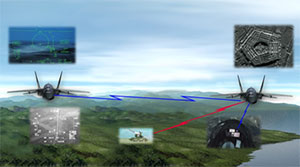
The T-7A represents the cornerstone of the complete Advanced Pilot Training System, which includes state-of-the-art ground-based training, the most advanced visual display systems ever fielded in a simulator and Integrated-Live, Virtual and Constructive (I-LVC) and Embedded training.
The system is designed so that it can operate without a ground station or for untethered operations, which:
- Allows multiple aircraft to fly cooperatively or fly against one another
- Allows aircraft to fly against ground simulators
- Allows multiple pre-programmed mission scenarios which can be selected on the fly from the cockpit or controlled from the ground by a mission coordinator
Students flying in the T-7A Red Hawk benefit from enhanced situational awareness, improved decision making, realistic preparation, improved safety and increased confidence compared to other training solutions.
Enabling Operational Readiness
With its purpose-built design, ease of access to maintenance panels and avionics compartments and increased reliability, the T-7A greatly reduces the impact of planned and unplanned maintenance to increase pilot proficiency, safety and force readiness.
Additionally, the Red Hawk is designed around common subsystems with 4th and 5th-gen aircraft to allow for the use of existing maintenance infrastructure, further simplifying maintenance and sustainment for lower life cycle costs.
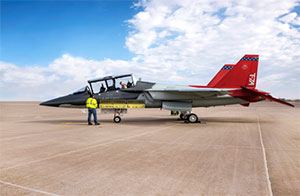
Gallery
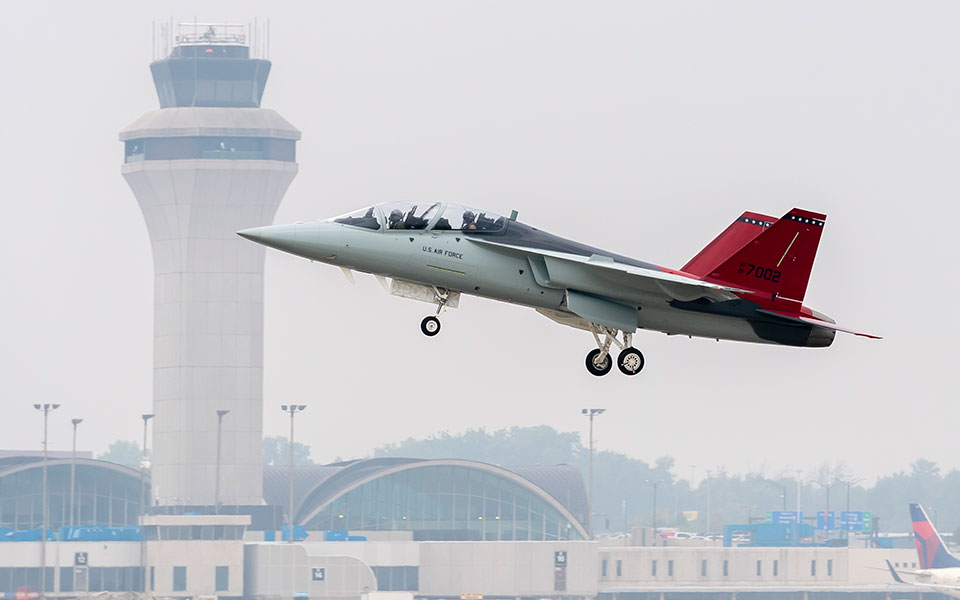
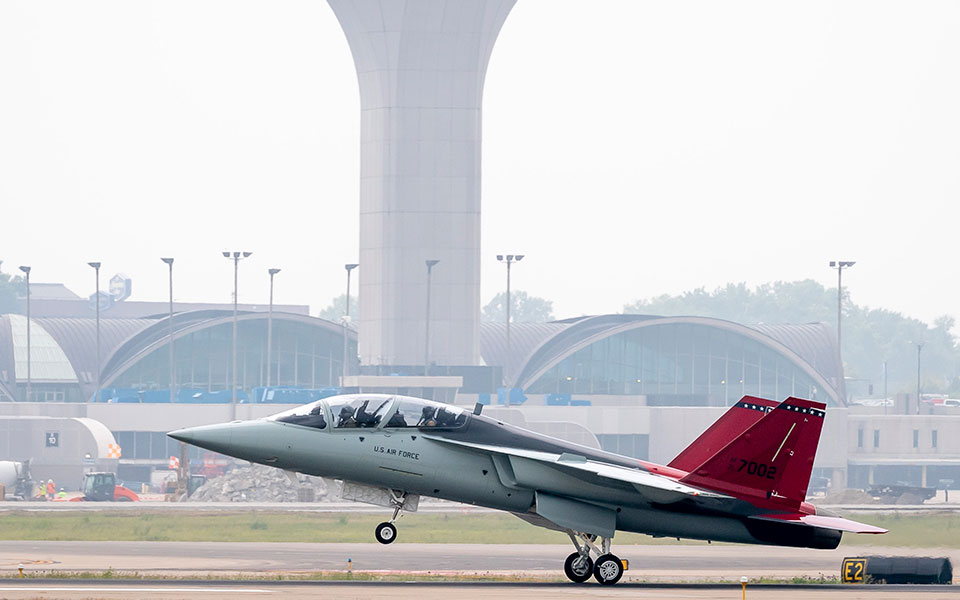
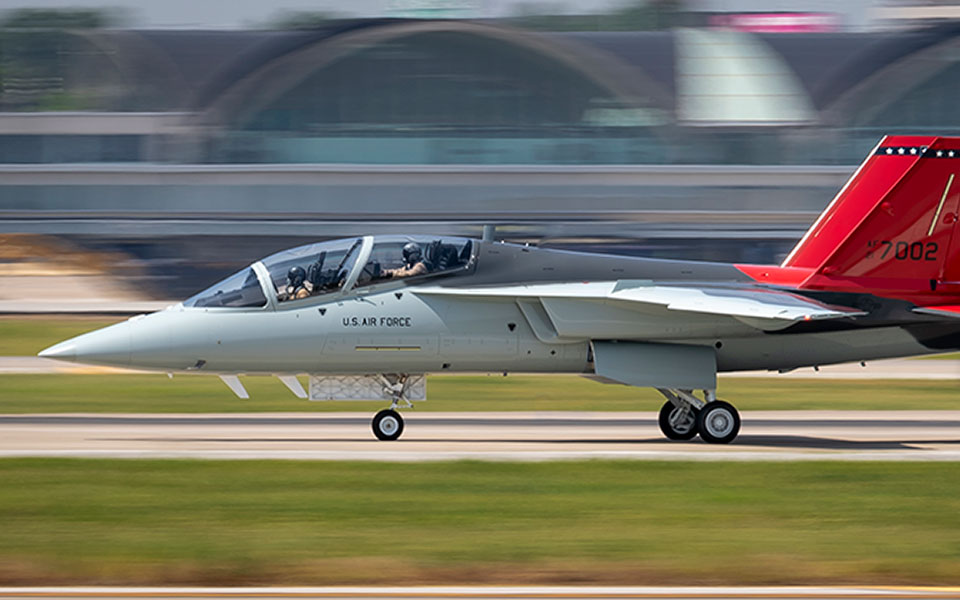
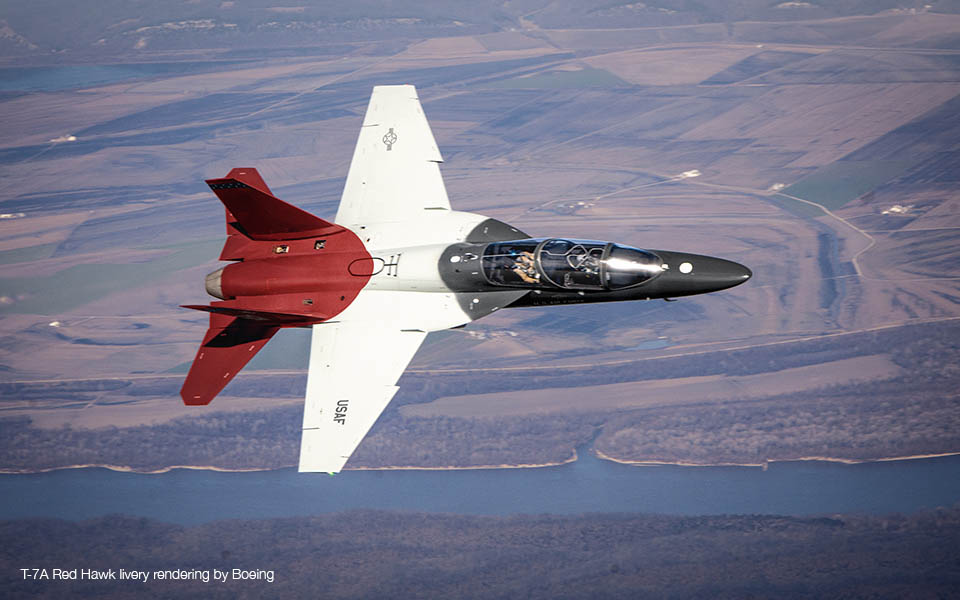
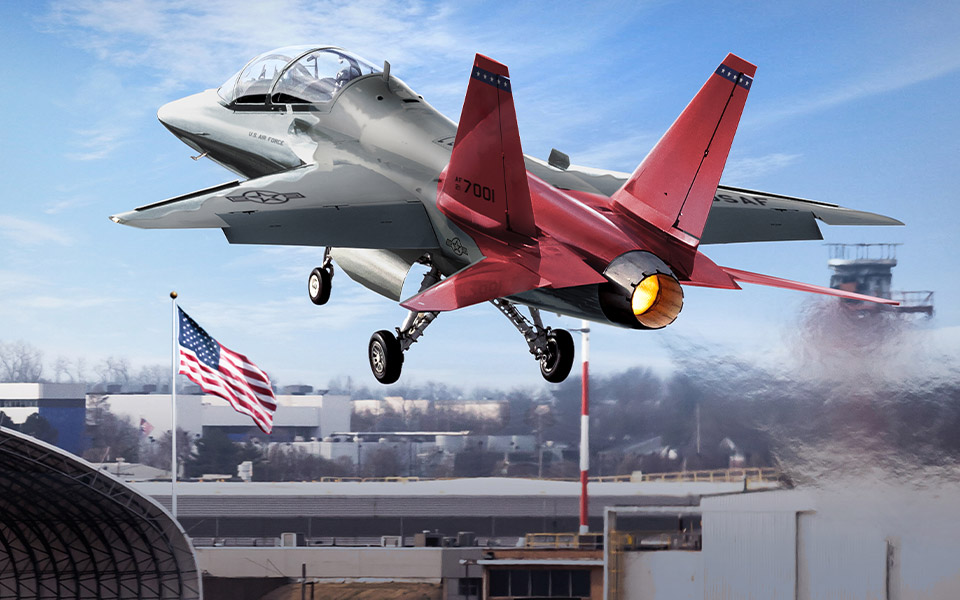
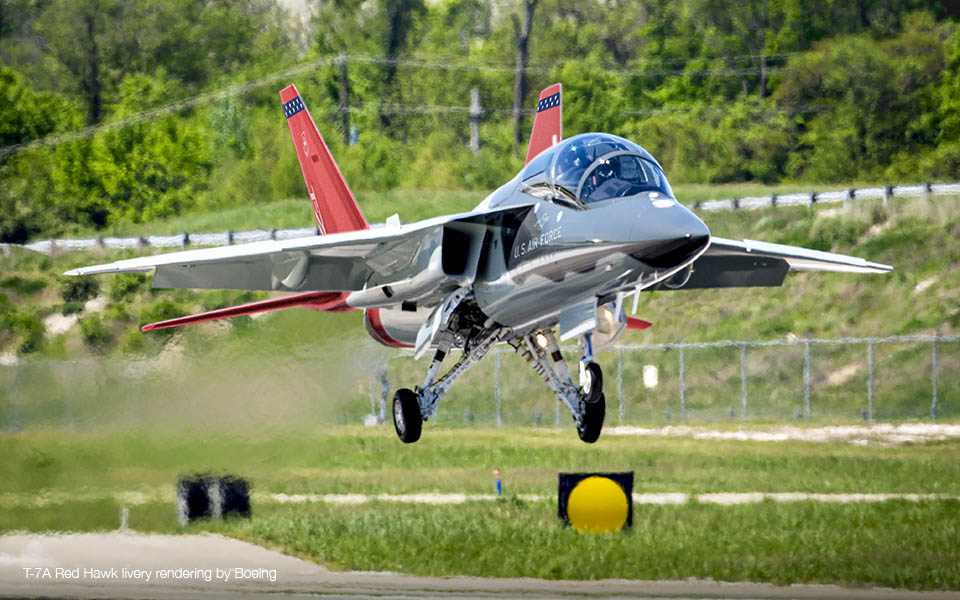
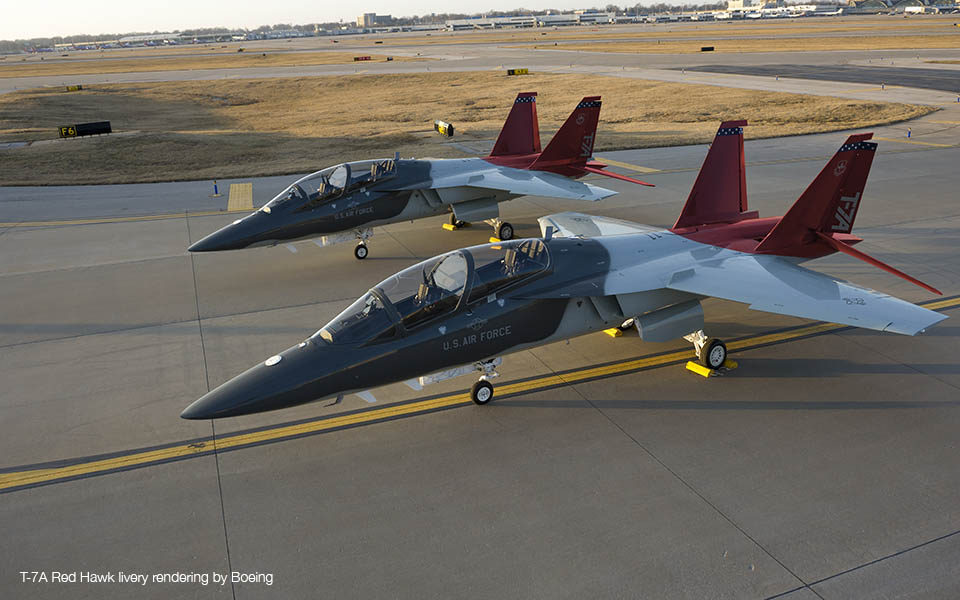
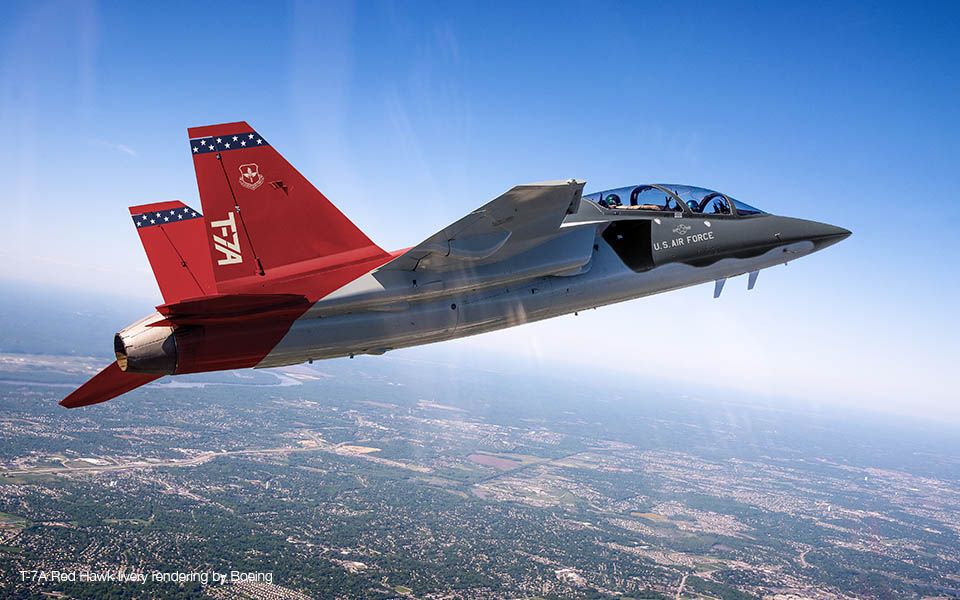
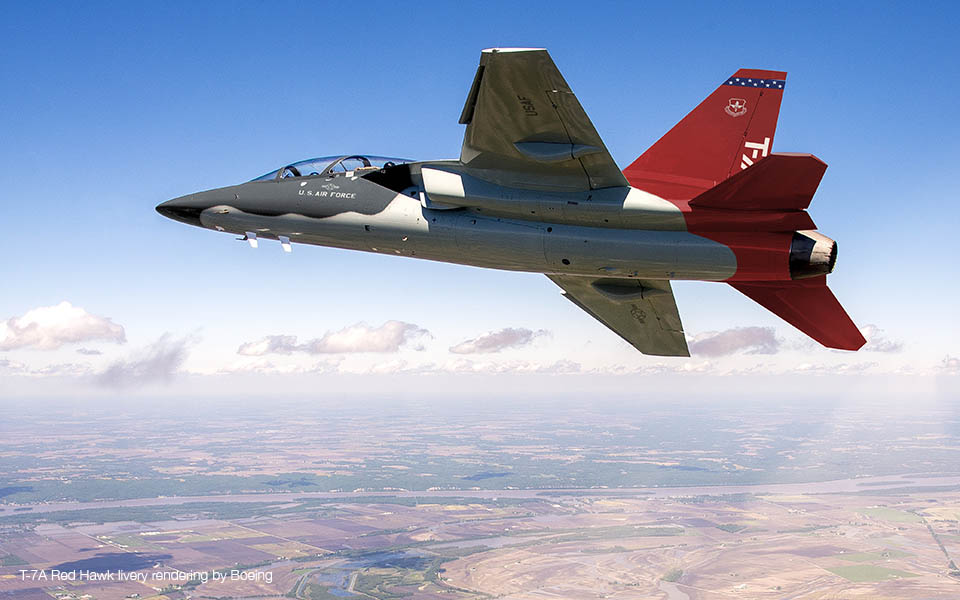
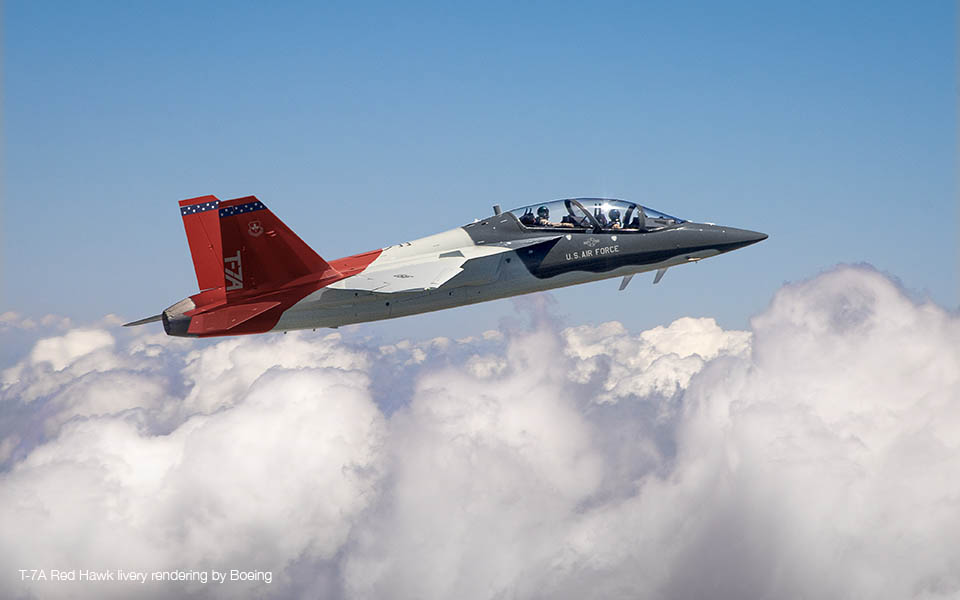
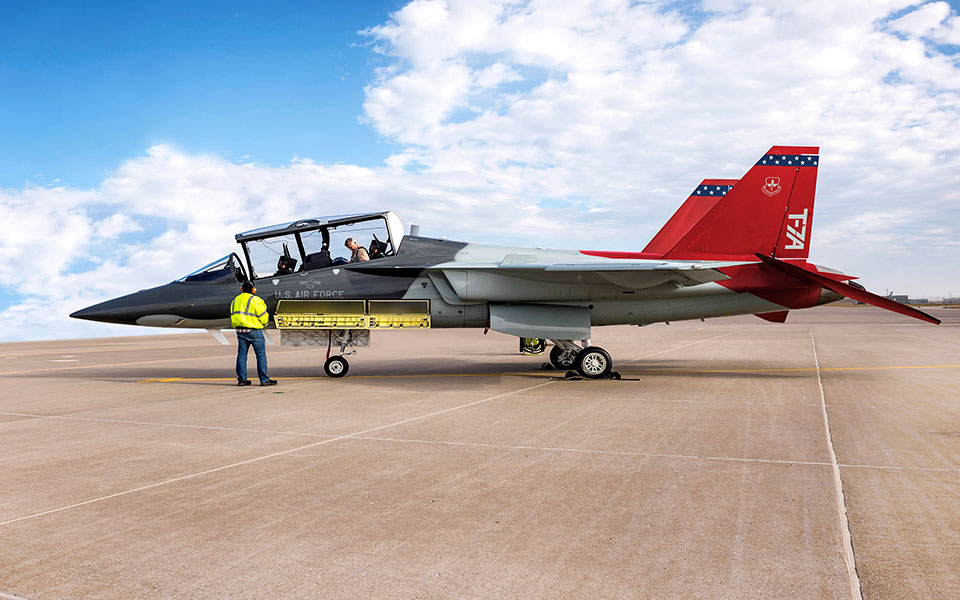
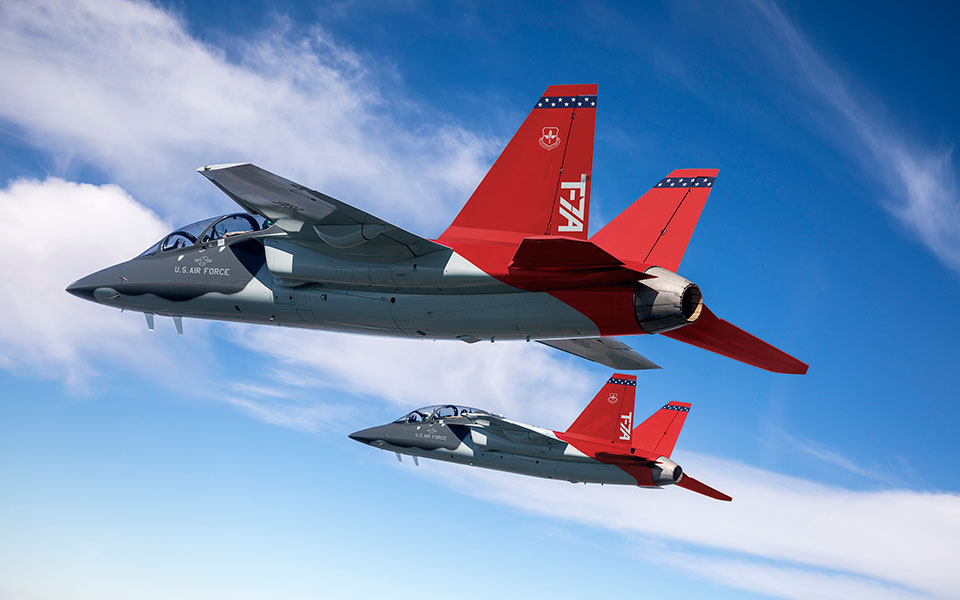
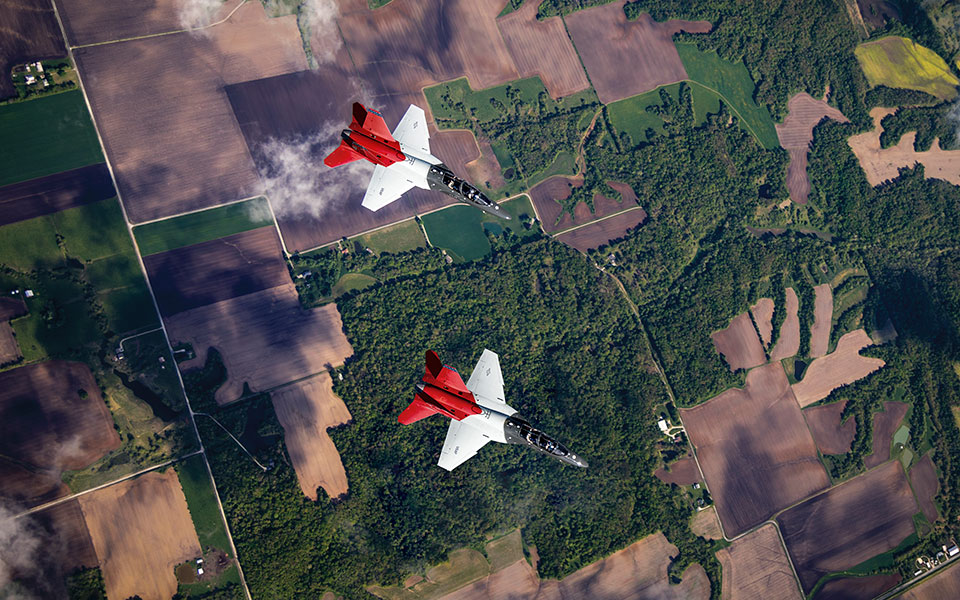
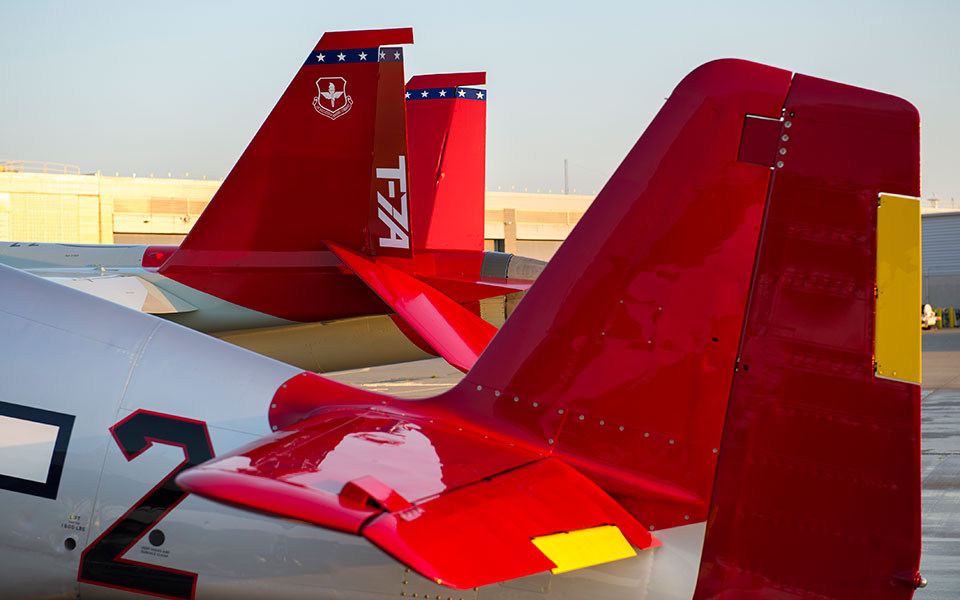
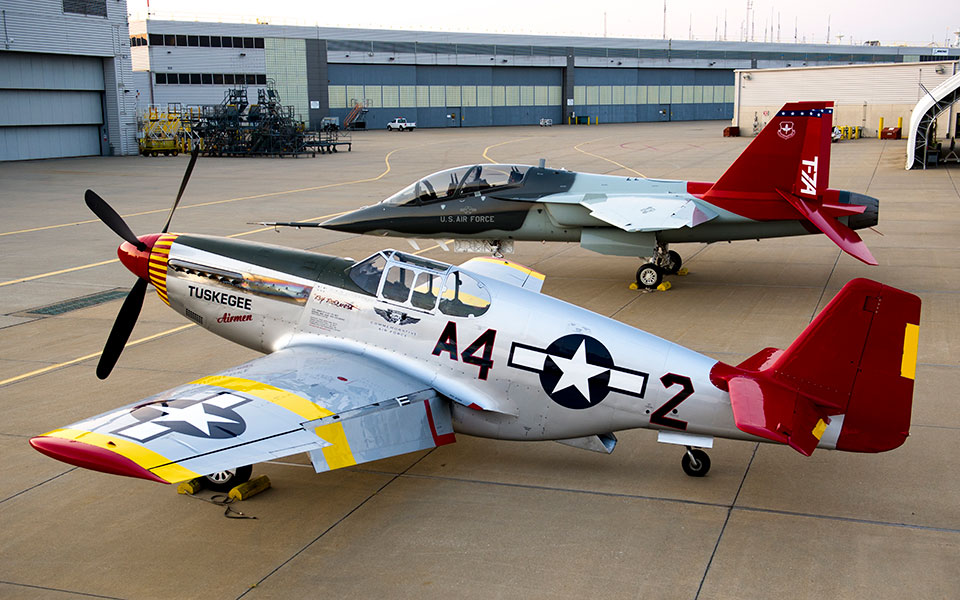
- Image 1
- Image 2
- Image 3
- Image 4
- Image 5
- Image 6
- Image 7
- Image 8
- Image 9
- Image 10
- Image 11
- Image 12
- Image 14
- Image 15
- Image 16

